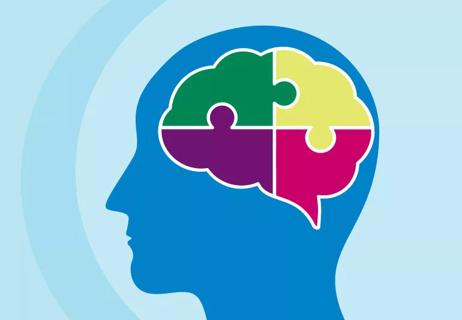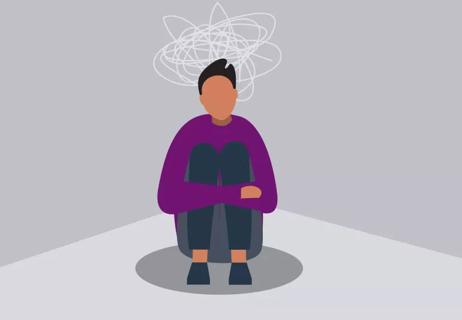When the drive is familiar or monotonous, ‘procedural memory’ can take the wheel

Driving from point A to point B is a simple enough task. But have you ever snapped out of it mid-drive and realized you were farther along than you thought? Or have you ever ended up at your destination out of the blue and couldn’t remember how you got there or what happened on the drive over?
Advertisement
Cleveland Clinic is a non-profit academic medical center. Advertising on our site helps support our mission. We do not endorse non-Cleveland Clinic products or services. Policy
If you take the same route to the same destination often enough, or you find yourself driving for long stretches on an empty highway, you might experience this displacement and lost sense of time, a phenomenon known as “highway hypnosis.”
Registered psychotherapist Natacha Duke, MA, RP, explains why highway hypnosis can happen to the best of us, why driving drowsy can make it worse and ways you can stop it from happening.
Highway hypnosis is characterized by a lost sense of time while driving. Details of how fast you were driving, how well you were driving, things you’ve seen along the way and locations you’ve passed might be fuzzy or difficult to recall. The drive can feel like a blur and feel far shorter than it actually was.
You don’t always realize when you’re having highway hypnosis until you’ve snapped out of it.
“People normally describe highway hypnosis as either they arrived at their destination and they don’t remember how they got there, or they’re further along in their route than they thought they were and they don’t know how they got so far,” says Duke.
“There’s usually a sense of some confusion and some concern of what happened in the minutes leading up to arriving at your destination.”
Advertisement
Highway hypnosis can happen to anyone, especially on the most familiar, mundane routes to and from frequently visited places like work, school, daycare and the grocery store. It can also happen during long, monotonous drives to the next town over, across the state or on longer road trips.
One study suggests highway hypnosis happens more commonly on motorways than residential roads where there are less frequent changes in direction and speed. And while the earliest definition of “highway hypnosis” classified it as an amnesiac, trancelike state with longer reaction times, similar to driving while drowsy, highway hypnosis may actually be associated with increased automatic attention with no differences in reaction time.
“Highway hypnosis is not the same thing as driving drowsy and it’s not the same thing as driving while being distracted,” distinguishes Duke.
Highway hypnosis is a lot like time blindness, or the idea that time flies when you’re having fun. When you’re consumed with a task you enjoy, your brain goes into autopilot mode and hyperfocuses on the task at hand so you lose track of time and other things happening around you. This behavior is rooted in something called ”procedural memory.”
When we’re talking about something that just catches on quite naturally, we often say it’s “a lot like riding a bike.” That’s because our brains are able to automatically recall how to perform procedural tasks — like the aforementioned bike riding, putting together a puzzle, playing the drums or driving a car — without making much conscious effort to do that task. In those situations, autopilot takes over so you can do those tasks with little to no effort.
Highway blindness, then, is caused by a combination of hyperfocused automatic attention and procedural memory.
“Your eyes are on the road and you’re alert, but your automatic brain processes take over,” explains Duke. “There’s a debate that it’s actually a sign of driving with confidence because you’ve done this so many times.”
Driving along the same path might lead to you ”zoning out” so that your brain takes over the process of getting you there without much effort. And the monotony of road trips, long drives and straight highways may have the same effect.
“When something becomes very familiar to us, a certain amount of automatic processes is actually expected,” notes Duke. “If you take the same route to work every day, you’re at greater risk for experiencing highway hypnosis because it becomes automatic for you. You don’t have to look out for the exit; you know your way.”
Advertisement
Highway hypnosis and drowsy driving are different concepts. Drowsy driving or being fatigued behind the wheel is always dangerous, while highway hypnosis isn’t dangerous unless you’re also drowsy or tired when it’s happening.
“What is important is that you’re alert and your eyes are on the road,” states Duke. “If your automatic processes happen in that scenario, then it’s not a danger because you’re still subconsciously alert to an extent. But if it’s happening when you’re sleepy and you’re falling into this highway hypnosis, there’s going to be a huge danger to your health and the health of other people on the road.”
According to the U.S. Centers for Disease Control and Prevention (CDC), more than 6,000 fatal car accidents each year involve a drowsy driver.
“Ideally you wouldn’t drive without sufficient sleep. Certainly, if you’re drifting off while driving, you’re going to want to pull over when possible,” says Duke. “If people aren’t going to do that or can’t do that for some reason, then you want to ensure you’re taking steps to stay alert by adding more stimulus.”
You can do this by:
Advertisement
Inattentiveness or distraction is also different from highway hypnosis because it makes navigation more difficult. If you’re inattentive or distracted, you might miss an exit on a highway or lessen your reaction time, so you’re not responding to interruptions like sudden traffic or emergencies effectively.
“If you’re overloaded and you tend to be that type of person where you’re doing 100 things at once, in those situations, I’d recommend doing a five-minute meditation before driving,” advises Duke. “You want to set your intentions of having your mind and body be in the same place so that you’re alert before you get on the road.”
“Anything that keeps you in the here and now can help with highway hypnosis,” says Duke.
That means, you’ll want to focus on being more intentional about your actions behind the wheel. If you rely on technology like a GPS to get you places, for example, try turning the GPS off so you rely less on that technology and more on your instincts, sense of direction and overhead highway exit signs or street signs to get you where you need to go.
“Cruise control seems to increase the risk of highway hypnosis,” adds Duke. “Relying on technology might make you feel more relaxed and more likely to fall into it, too.”
Advertisement
If you’re always taking the same routes to wherever you’re going, try taking a new path so that you’re faced with a bit more of an unexpected journey.
“If we change our routine, we’re not going to rely on those automatic processes because we’re going to need to be more attentive to our surroundings,” she says.
For longer drives, you can do other things like read highway exits to yourself out loud as you pass them, adjust your seat so that you’re sitting upright and alert, and take a break every 90 minutes or so to avoid getting tired, distracted or burnt out on the drive ahead of you. If you’re someone who loses track of time, set an alarm so you can check in with yourself and how you’re feeling.
Whatever you do and however often highway hypnosis affects you, you want to make sure you’re wide awake, alert and ready for whatever happens when you get behind the wheel, and then let your brain do the rest.
“Nothing is going to replace sleep in terms of your reaction time,” says Duke. “If you’re nodding off and feel you’re falling into a trance-like state or you’re kind of drifting, at the first sign of that you’re going to want to pull over safely.”
Learn more about our editorial process.
Advertisement

Use the power of suggestion to change your thoughts, emotions and behaviors

Is it a multiverse or collective misremembering?

Learn about hypnotherapy and how it can compliment your training regimen

Acupuncture, herbs and hypnotherapy curb cravings naturally

A guided process of connecting current feelings to past events

Most recommended precautions center around minimizing bruising or swelling

Even one drink can have an impact on your cognitive function leading to slurred speech, blurred vision and impaired memory

Type 2 diabetes isn’t inevitable with these dietary changes

Applying a hot or cold compress can help with pain